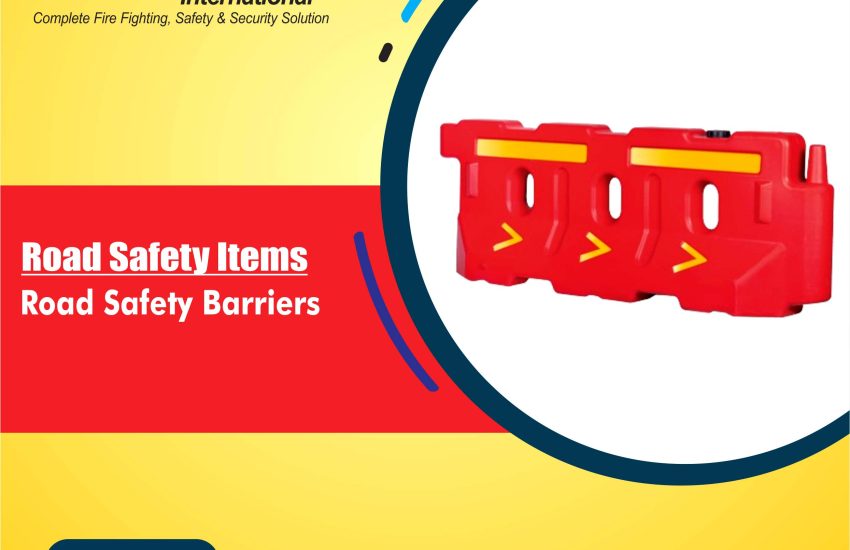Road Safety Barriers are crucial for reducing accidents and ensuring the safety of drivers and pedestrians. They guide traffic, protect pedestrians, and prevent vehicles from entering dangerous zones. In this guide, we’ll cover the uses, benefits, types of road safety barriers, and provide tips for choosing the right one for your needs.
What Are Road Safety Barriers?
Road safety barriers are physical structures installed along roads to prevent vehicles from entering unsafe areas like opposing lanes, construction zones, or pedestrian paths. These barriers help to guide traffic and protect workers at construction sites. Made from materials like steel, concrete, or plastic, road safety barriers absorb impacts and minimize accident severity.
Why Are Road Safety Barriers Important?
Road safety barriers offer many benefits that significantly improve road safety. Here are the key reasons why they matter:
- Prevent Accidents: Road safety barriers prevent vehicles from veering off the road into dangerous areas. They absorb the force of collisions and redirect vehicles to safer zones, reducing accident severity.
- Guide Traffic: Barriers help maintain smooth traffic flow in high-congestion areas. They prevent confusion and accidents at complex intersections and construction zones.
- Protect Pedestrians: In areas with high foot traffic, road safety barriers separate pedestrians from moving vehicles, preventing pedestrian accidents in busy zones.
- Ensure Worker Safety: In construction zones, barriers protect workers from oncoming traffic. They prevent vehicles from entering restricted work areas, keeping construction teams safe.
- Increase Visibility: Reflective strips and bright colors make barriers more visible to drivers, especially in low-light conditions, reducing the risk of collisions.
Common Uses of Road Safety Barrier
Road safety barriers are versatile and serve various purposes. Here are some common uses:
Highways and Motorways
On highways, road safety barrier prevent vehicles from entering opposing traffic lanes or hazardous areas. They provide protection, especially near sharp turns or bridges.
Construction Zones
In construction areas, barriers create a clear separation between vehicles and workers. These barriers protect workers from fast-moving traffic and ensure the safety of construction zones.
Pedestrian Areas
Road safety barrier are essential in busy pedestrian areas. They create a physical boundary between sidewalks and roads, reducing pedestrian accidents in high-traffic zones like near schools or shopping centers.
Temporary Traffic Control
During road closures or events, road safety barrier control traffic flow and ensure the safety of attendees and workers. They guide vehicles and block off restricted areas.
Types of Road Safety Barriers
There are several types of road safety barrier, each designed to meet specific needs. Here are the most common types:
Guardrails
Guardrails are steel barriers designed to prevent vehicles from crossing into dangerous areas. They redirect vehicles safely, reducing the risk of accidents, especially on highways and motorways.
Crash Barriers
Crash barrier are designed to withstand high-impact collisions. Made from concrete or steel, they absorb the impact from crashes and redirect vehicles, making them ideal for high-risk areas like sharp curves or bridges.
Concrete Barriers
Concrete barrier provide strong protection against high-speed impacts. These barriers block vehicles from entering restricted zones and prevent accidents in construction zones or high-traffic areas.
Plastic Barriers
Plastic road safety barrier are lightweight, portable, and ideal for temporary applications. Filled with water or sand, these barriers are often used in construction zones, events, or parking lots.
Pedestrian Barriers
Pedestrian barrier keep pedestrians safe by creating a physical separation between foot traffic and vehicles. They are commonly used near schools, busy intersections, and parks.
Cable Barriers
Cable barriers are made from steel cables strung between posts. They flex and redirect vehicles during impacts, preventing them from crossing into opposing lanes. These barriers are useful on highways to separate traffic and enhance safety.
How to Choose the Right Road Safety Barrier
When selecting a road safety barrier, consider several factors. Here are some important tips to help you make the right choice:
- Location: Choose barriers based on the environment. High-speed highways need more durable options like steel guardrails or concrete barriers, while lower-traffic areas may benefit from lightweight plastic barriers.
- Traffic Volume: In high-traffic zones, choose barriers that can withstand high-speed impacts, such as crash barriers or guardrails. In low-traffic zones, you may only need plastic or water-filled barriers.
- Purpose: Decide on the barrier’s primary purpose. Whether you need to protect pedestrians, prevent vehicles from leaving the road, or guide traffic, understanding the need will help determine the best barrier type.
- Visibility: Consider barriers with reflective strips or bright colors if they are placed in low-visibility areas. This ensures drivers can see the barriers clearly at night or during poor weather conditions.
- Durability: Ensure the barrier you choose is durable enough to withstand the environment and traffic conditions. Materials like steel and concrete are known for their long-lasting strength, while plastic barriers are better for temporary use.
Maintaining Road Safety Barriers
To ensure road safety barrier continue functioning effectively, regular maintenance is key. Here are some maintenance tips:
- Inspect Regularly: Frequently check barriers for damage or signs of wear. Repair or replace damaged sections immediately to maintain their protective function.
- Clean Barriers: Remove dirt, debris, and vegetation that can obstruct the barrier’s visibility and performance.
- Check Reflective Strips: Reflective strips enhance visibility, especially at night. Regularly inspect and replace any damaged strips to ensure maximum visibility.
Conclusion
Road safety barrier are essential for ensuring the safety of drivers, pedestrians, and workers. Whether on highways, in construction zones, or pedestrian areas, these barriers help prevent accidents and maintain safe road conditions. By selecting the right type of barrier based on your specific needs and maintaining it regularly, you can create a safer environment for everyone on the road.


